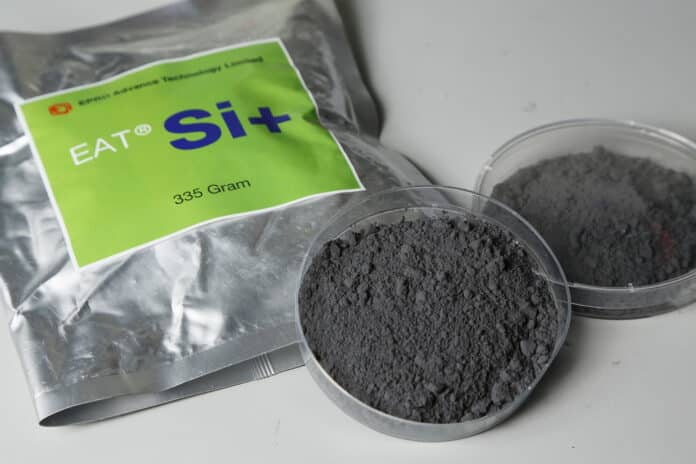The lack of practical solutions in Hydrogen storage and transportation inevitably led to the pitfall of the Hydrogen Economy, despite significant advancements in hydrogen production and energy release. A Hong Kong-based renewable energy company, EPRO Advanced Technology (EAT), has announced a breakthrough prove in green hydrogen energy generation and energy storage. It is believed to be the easiest and lowest cost way to deliver hydrogen that the world has seen.
EAT has developed Si+, a ground-breaking porous silicon material, which can generate on-demand ultra-pure hydrogen from a water source. Si+ can also act as solid-state hydrogen generating material, which is compact, robust, and easily transportable.
According to the company, the new material has the potential to solve the significant challenges of the storage, safe handling, and transportation of hydrogen, long-standing inhibitors of the growth of the hydrogen economy.
When green hydrogen is needed, you simply dump the Si+ powder into water and mix it around a bit. And that’s all you need to do. Hydrogen gas then starts bubbling out. Si+ can generate large amounts of hydrogen on demand – up to 14 wt% hydrogens at moderate temperatures between 0-80°C, with volumetric energy density at 140 kg/m³.
The production process consumes underutilized electricity, emitting no greenhouse gases. The raw material is metallurgical silicon, which can be sourced from sand together with a carbon source, or from recycled silicon from broken or end-of-life, solar panels otherwise destined for landfill.
The company claims that its Si+, which is in solid form and packed in containers, can ship up to 30,000 tonnes of hydrogen per average-sized cargo ship. For comparison, the world’s first liquid hydrogen ship built by Kawasaki Heavy Industries can only carry 88.5 tonnes of liquid hydrogen.
As a guaranteed source of safe, on-demand energy, Si+ has multiple uses. It can facilitate the phasing out of expensive and polluting backup diesel generator sets. In addition, Si+ is an ideal replacement for marine fuel oil and offers a thermal energy storage solution through exothermic heat that is released during the Si+ hydrogen generation reaction.
The material will also support the mass roll-out of hydrogen fuel cell electric vehicles and hydrogen-powered flights. Si+ hydrogen refueling stations generating on-demand hydrogen locally can share the footprint of existing fuel stations, reducing capital and operational expenditure.
